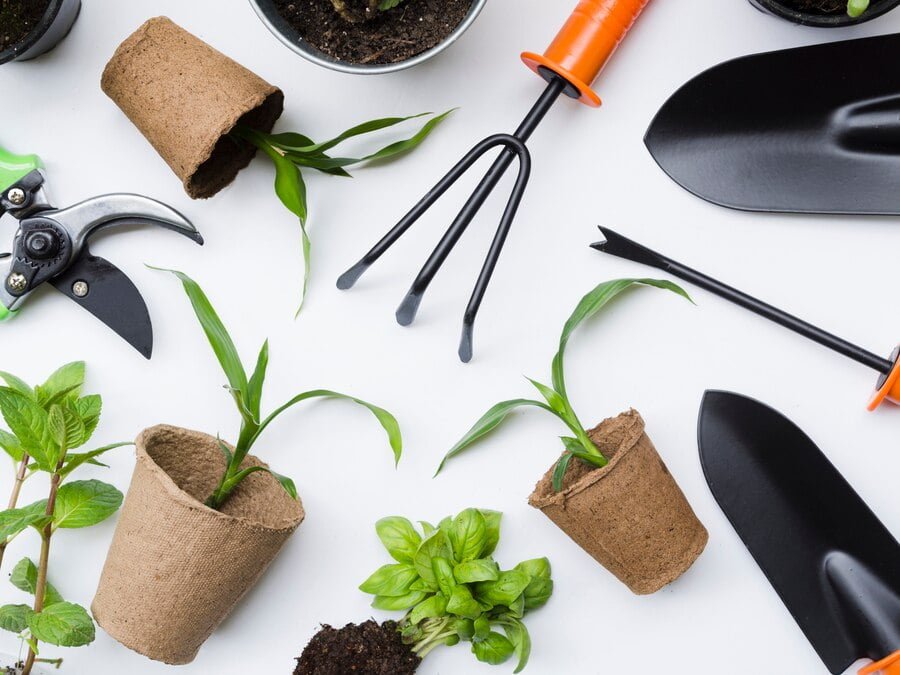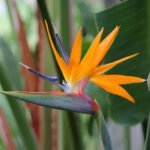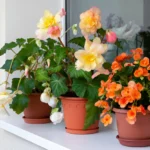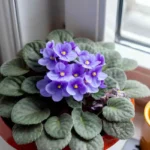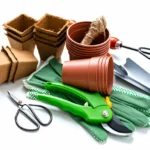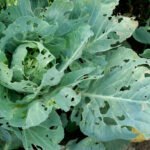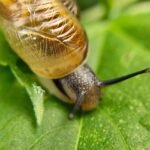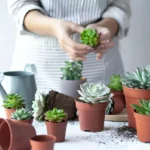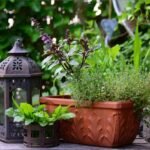Many new home gardeners need more care and observation to grow houseplants.
Two reasons for this could be ignorance and carelessness. As a result, newbies tend to encounter more problems in caring for plants and sometimes end up killing their favorite plants. To help you avoid these issues, we will discuss using some accessories that will assist you in caring for indoor plants in your home, ensuring they last for years.
Below, we will discuss 25 plant accessories.
1. Repotting Mat
A plant needs to be repotted at regular intervals. When you can see the roots of the plant beneath the tub, repot. If the plant is not reported at the right time, the plant’s roots will not grow, and the new branches will not spread. So, you have to do the repotting on time.
Many people start repotting with plants directly on the floor or table while repotting. It is unsightly when the soil from the plant falls onto the floor or table from its container. You can easily repot the plants using a repotting mat. Repotting mats are made of plastic and have rectangular buttons that adjust to each other to form the mat’s box. The soil will not roll down when you are repotting the plant. At the end of the work, you can throw away the mat or put the remaining soil in another pot. Your floor will neither be dirty nor damaged.
Many repotting mats are found to create mediums for plants.
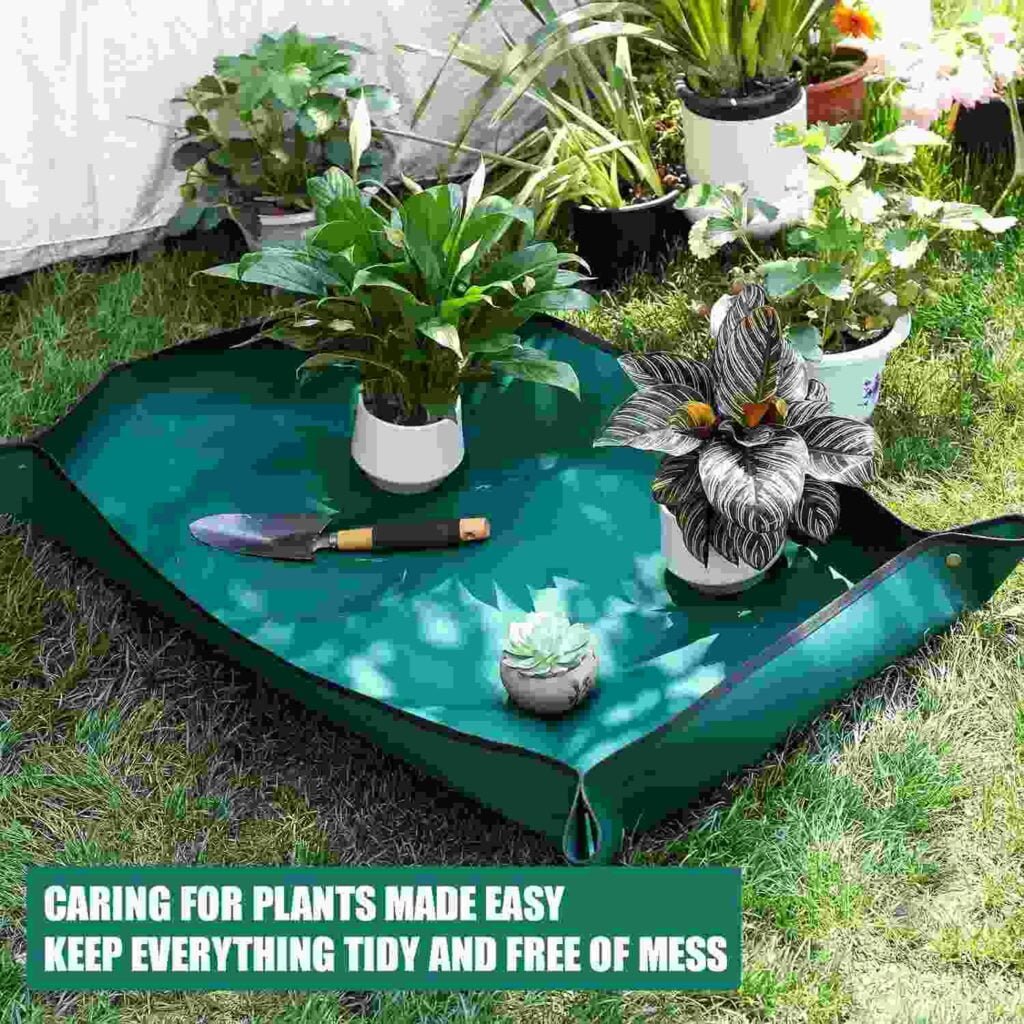
2. Microfiber gloves
Indoor plants can absorb airborne dust, which helps in reducing the dust in your house. As a result, you can notice a lot of dust, sand, and fur accumulating on the leaves of the plant. Plants produce food through photosynthesis and breathe through leaves. The dust clogs the tiny pores (not visible to the naked eye) in the leaves, preventing the plant from carrying out photosynthesis. With these microfibers, you can easily clean the dust and dirt from the plants. With the microfiber gloves, you can easily wipe all parts of the leaves within a few minutes. Microfiber gloves are a complete game changer.
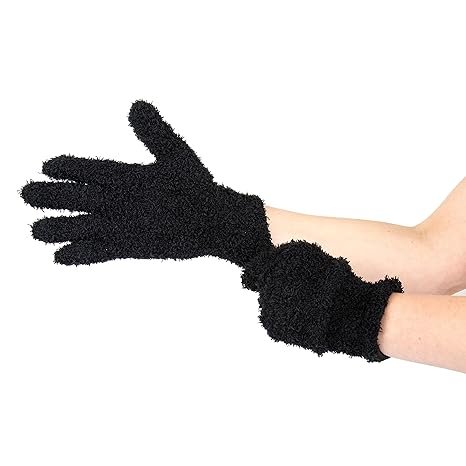
3. Sticky Traps
Indoor plants have a variety of pests that can harm them in no time. Due to your carelessness, they can spread on the tree. In spring and winter, insect infestation is noticeable. Hang sticker cards in plant tubs or tree branches to protect your plants from these pests. As the sticky traps are yellow and sticky, insects are attracted to them, and when they come into contact, they get stuck in the glue and cannot move. This way, you can save the plant by trapping the insects using sticky traps.
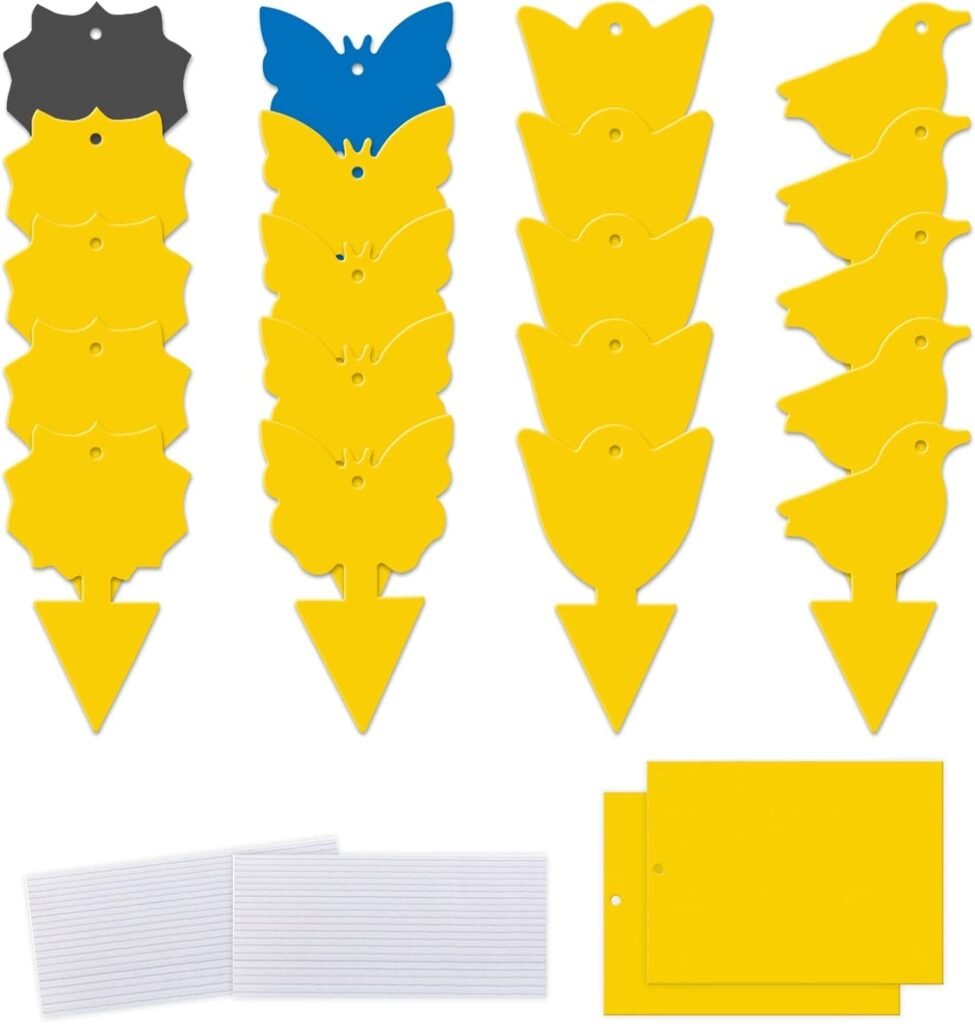
4. Watering can
Watering the plants is essential. You need to water the plants depending on the size of each plant, type of tub, lighting, etc. One thing you should always keep in mind while watering is to not overwater the plants. If you overwater your plant, the roots will stay wet, and the leaves will turn yellow and fall off if the plant roots rot. Before you know it, the tree may die or it may become difficult to revive it. You should always give the plant enough water.
What can you do to give the plant enough water?
You should water your plants with a watering can. Watering cans are small in size and have long tubes with narrow heads and release very little water. Watering with a watering can allows you to give very little water. There is less risk of excess water spilling out of your hand while giving. If you have a plant shelf, and the height of the plant shelf is too high for you to reach, making it difficult for you to water it. You can easily water the plants above the shelf with watering cans.
They are available in different sizes ranging from 1-3 liters.
The advantage is that you can fill it with water, making it easier to carry.
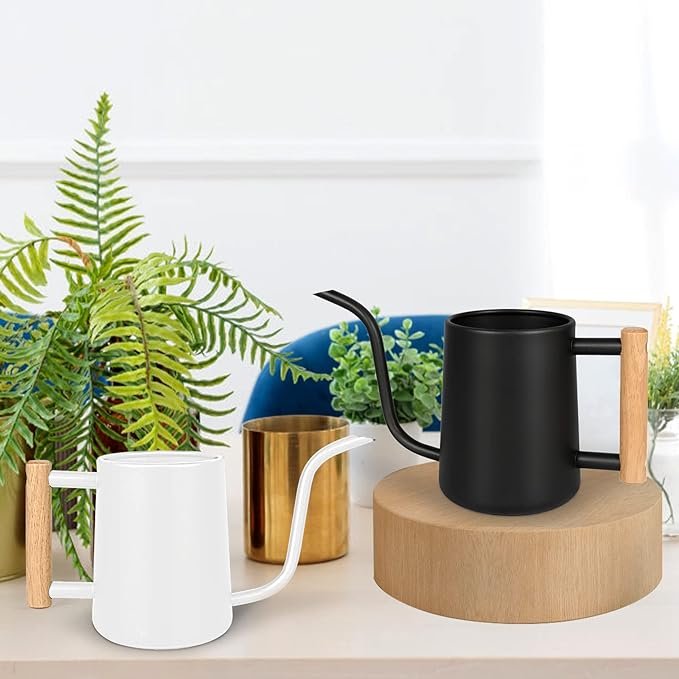
5. Rain cloud humidifier
You can use a humidifier to add humidity to your home and ensure the right amount of humidity for your plants. You can place humidifiers anywhere in the room. Rain cloud humidifiers are beautiful to look at. The water flows, and the mist comes out on top, which enhances the beauty of your room several times. Avid gardeners can use this pretty humidifier.

6. Climbing Plant Hooks
Creeping plants such as Pothos have a natural tendency to climb walls. You can use climbing plant hooks to attach them to the walls in your room and create a beautiful decoration. Pothos plants are tall, spreading, and bushy, with stems that stick out. By training them to climb the walls, you can turn your living room or bedroom into a forest-like space that looks aesthetically pleasing. Using living leaves on plastic sheets is a great way to achieve this effect.
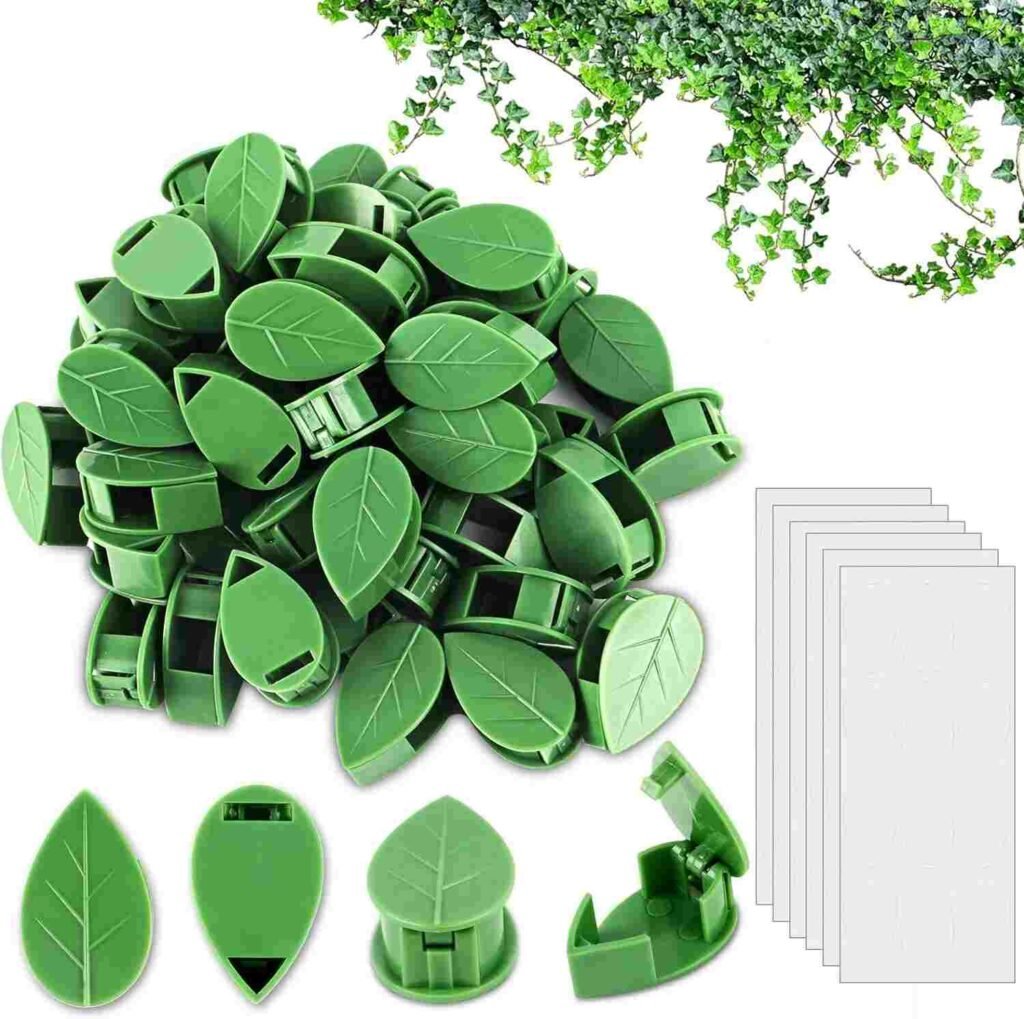
7. Moisture Meter
Water is an essential element for plants. Plants need water for photosynthesis, plant rejuvenation, root growth, and nutrient uptake from the soil. New plant breeders tend to overwater, thinking more water will make the plant grow faster. This misconception can cause the roots of plants to rot from excess water before they realize it. You should check the soil moisture before watering the plants. Experienced individuals can easily understand the soil moisture of plants using the finger method, but it is difficult for beginners.
You can use a moisture meter to get accurate soil moisture information. When the long steel handle of the moisture meter is inserted into the soil of the tub, the needle on the meter will move to indicate whether the soil is dry or moist. Then you can easily understand when to water your plants. You can be more specific if you test the moisture meter by rotating it. In order to safeguard the plant, you can do soil tests and provide it water.

8. Mesh Hool Pads
A mistake many people need to correct when planting plants in clay-type pots or large-size pots is to grow the plants directly in the soil. When you water, the water in the tub settles the soil and clogs the holes in the bottom. Ultimately, the water you give to the plant does not drain through the drainage holes, accumulates in the tub, and the excess water can cause root rot. You can use mesh hool pads to prevent root rot by ensuring drainage holes are unclogged, and excess water is drained. It resembles a small sphere and mesh (see picture), which acts like a sieve and can expel water.
When planting, cover the tub opening with the mesh hool pads, then cover with a layer of stone, charcoal, leca, vermiculite, etc., before adding medium. In this way, through the medium layer and mesh hool pads, you can prevent the roots of the plants from rotting.
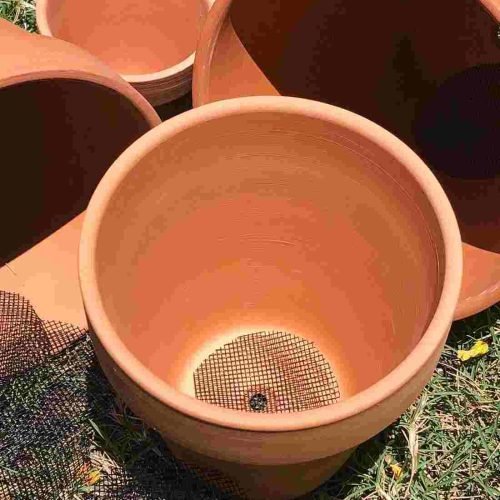
9. Plant light/Growing light
Another crucial element for indoor plant growth is light. However, indoor gardeners need more sunlight or window light to grow plants. Moving plants to get light can be very troublesome and time-consuming. When many people want to grow plants in the kitchen or living room, natural light can be a challenging issue. Use plant lights or grow lights to meet the light needs of your houseplants. You can grow lights with various designs and features from nursery shops or online stores. I’m going to provide a grow light photo.
clip system that you can attach to or next to plants anywhere in your home. It also has a great feature of three colour spectrums that you can adjust to suit your plant’s needs.
These grow lights are great for plants in the kitchen because kitchen space is limited, and they provide more diffuse light.
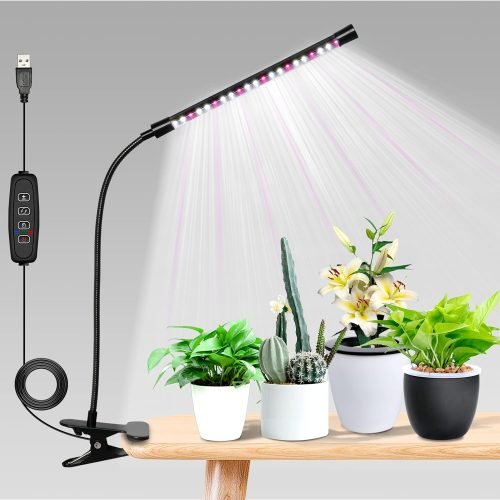
10. Timer Plug
You may need to remember when to turn off your lights in your busy life. The sun gives light until a particular time of the day, and after that, it is time for trees to sleep, but if you don’t turn off the grow light, the plant will get too much light, and there is a risk of burning the leaves. We would never want the beautiful leafy plants in our house to burn. You can set the timer plug with the growing light to do this. Rest assured, now. You can turn the timers on or off remotely while you are out of the house, by turning them on and off at specific times you can reduce your electricity bill.
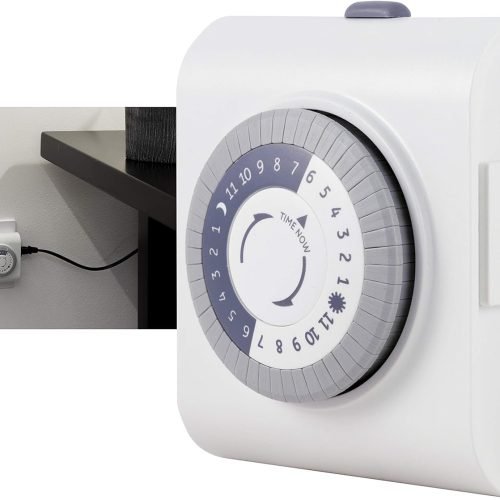
11. Moss Pole
Plants such as pathos, philodendrons, and creepers use moss poles. Moss poles help these plants climb. Their branches can grasp the poles tightly, and they can grow very comfortably on them.
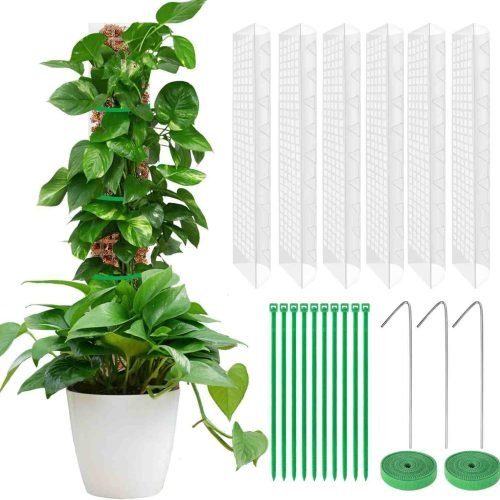
12. Plant Labels
Indoor plant enthusiasts like to grow plants. They fill every place in the house with plants.
You may have more than one variety of plants or more than one variety of plants in your home. Indoor plants are named based on various factors, resulting in strange, complex, and prominent names. Those with a sharp memory can easily remember the names of the trees. My tree enthusiast friend called him a genius. He memorized not only the names but also their scientific names and all the country’s localities, including their origins. If you ask him the name with a picture of a tree, he will say everything in a few seconds. If you’re like him, you might not need a plant label. But if you need to be more mindful like me, label the plants. That will help you remember the names of your plants.
Plant labels not only provide the mother tree’s name but also allow you to write the age and date of planting.
Use labels when germinating seeds indoors. Record the date of sowing, germination date, and even when fertilizer is applied. It is beneficial.
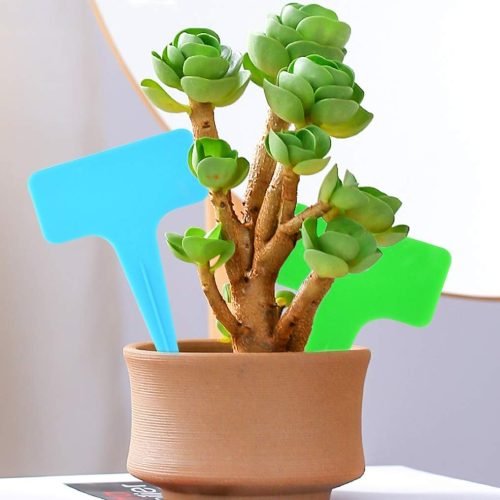
13. Mister
You may need to water small plants differently from larger ones depending on their size, the size of the tub, and the type of foliage. You cannot water small plants with a watering can. You should spray water when washing leaves, but fuzzy leaves don’t like misting water. Fill a mister with water and spray your plants. The water will fall like fog. You may need to use a mister when watering leaves.
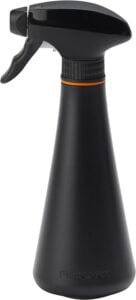
14. Plant Stakes
Pathos, sansevieria, oxalis, and other plants like to spread their stems. However, their stems can sometimes be broken by wind or hitting something hard, which is quite painful for a gardener. To keep your plants straight, use plant stakes. These are available in the market in different shapes and sizes; collect them according to your needs. Plant stakes are often used for outdoor plants. They hold tomatoes, brinjal, and other plants with them so they may climb and remain erect. Try it, too.
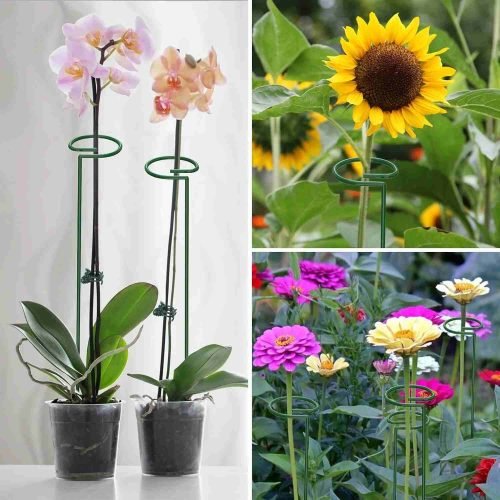
15. Pruners
During the growth season or in the spring, you might need to cut off surplus branches. You may need to trim the stems (rubber plant stems) from your tree for seedlings. It would help if you used good quality sharp scissors. So that the branch can be cut in one stroke, and you get a perfect cutting for planting. To make these tasks more accessible for you, keep pruners at home. You may need these pruners to trim dead leaves or cut branches.
Many people use pruning shears of different sizes and shapes for bonsai trees.
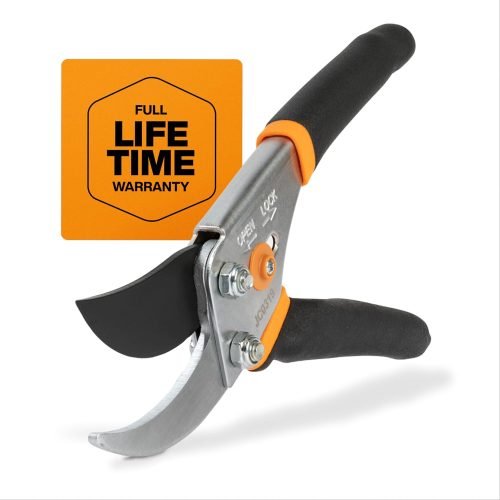
16. Seed Starter
If you want to grow vegetables or herbs in a kitchen garden or bed garden, you may need to grow seedlings from seeds at home. Home-grown seedlings are ten times better than store-bought or online seedlings. You will need to use seedling trays or pots to start your seedlings. Growing seedlings indoors is easier because you can control the sunlight and humidity more easily than outdoors. The pace at which your seeds germinate will multiply many times. A seed starter pot or tray, whatever you call it, will help you sprout seedlings from seeds on your windowsill.
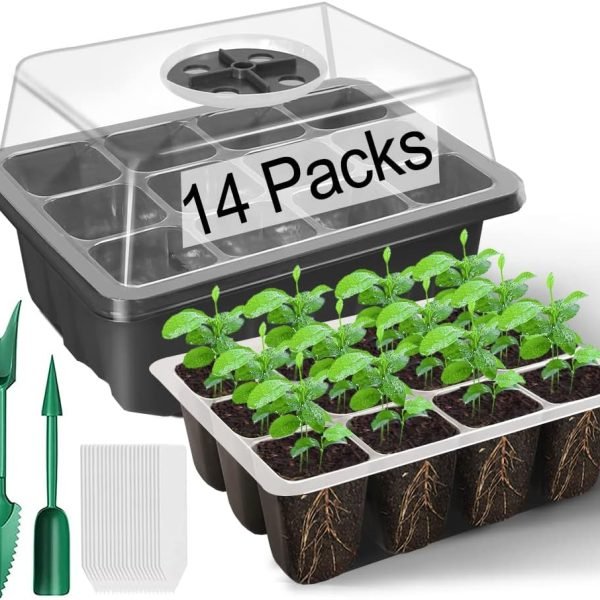
17. Velcro Tape
You should avoid using plastic rope to tie creepers or climbing plants to coconut sticks, moss sticks, or lumber. Plastic ropes can damage plant soft branches and leaves. You can easily tie your climbing plants with Velcro tape. The tree branches will not be damaged, and your tree will be protected.
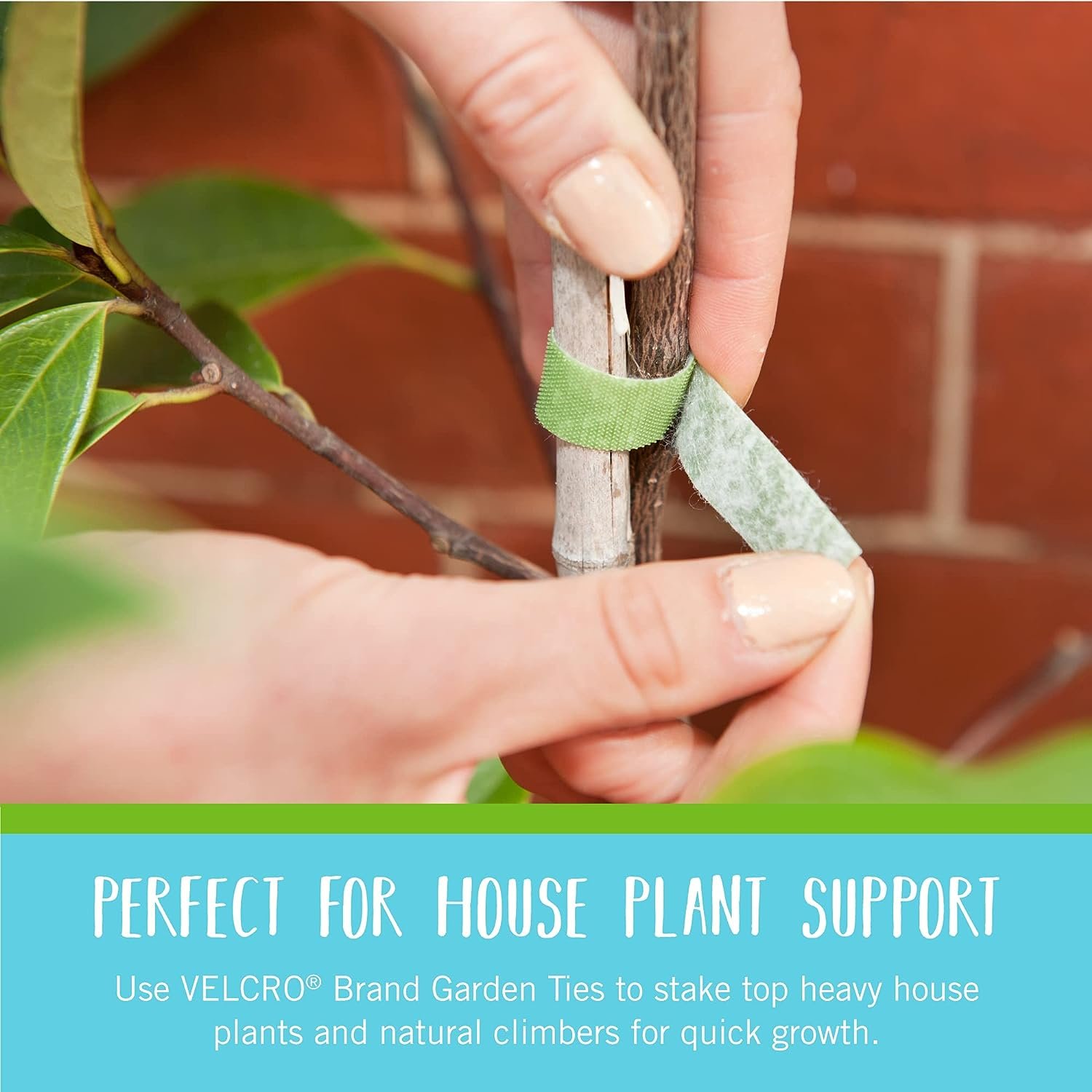
18. Mushroom Propagation
You may be inspired to plant seedlings to grow indoor plants. Everyone wants to be an indoor parent, and I hope you are no exception. You will learn about simple methods of sprouting from twigs or leaves. Planting in water is the easiest. Keep the stems soaked in water, and when the roots develop, transplant them into the tub with the medium. Mushroom propagation tubes look fantastic and make your propagation process easy and beautiful. It looks like a mushroom with several holes on the top that you can insert to plant different stems. I like its structure the most.

19. Root Pouches
Many of us discard or waste cuttings while planting from cuttings. You can easily plant seedlings with Root pouches. Root pouches are applied to the branch from which you want to grow. You don’t need to water, and you don’t need to cut the stems and separate the cuttings. You just put the root pouches face on. Now, wait for root growth. Since the branch is attached to the mother plant, it will collect food and water from the soil and bring roots to that part of the branch. Cut the branch and place it in the medium when you get roots. Different sizes of root pouches are available in online stores. It’s your turn to collect.
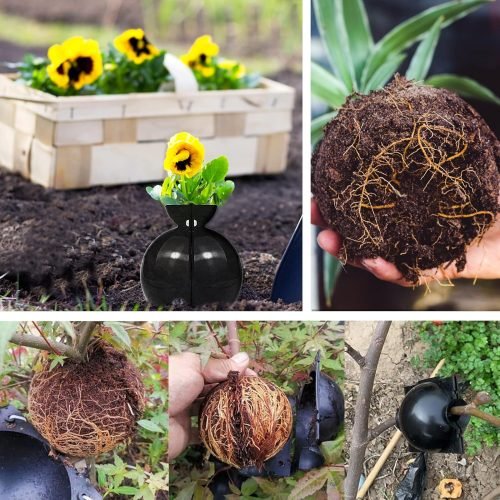
20. Self-Watering Pots
You may need to remember to water your plants regularly because you are busy traveling or working. In this, the tree will be seen dehydrating. By planting plants in self-watering pots, you will eliminate the problem of regularly watering your plants. Once you water the plant, it will collect it according to its needs. Self-watering pots have a nylon rope, one end of which is placed in the water through a hole in the bottom of the tub, and the other is placed in the soil of the plant tub. The nylon rope stays wet and helps to moisten the soil. Planting plants in these pots does not require regular watering.
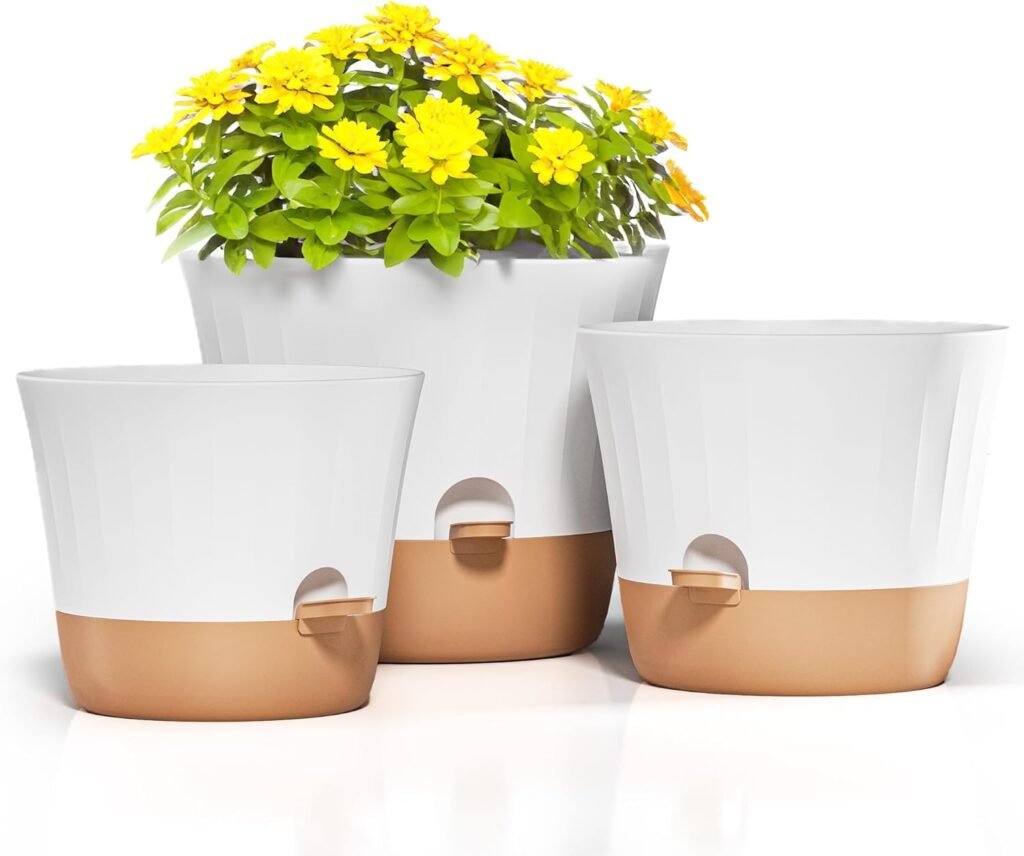

21. Humidity Meter
It would help to keep the indoor temperature right in different seasons because indoor plants need 40-75°F. It would help if you used a humidity meter or hygrometer to measure the humidity of the room when the temperature rises in each season. Please place it in the plant room or near the plant. You can measure it on a digital scale.
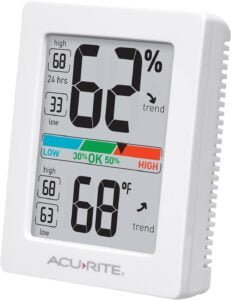
22. Propagation Wall Tub
You have curious pets in your home who are restless and strongly attracted to everything. When they see something new in the house, they go ahead with interest and either destroy it or throw it away. You can run into these problems when transplanting plants from cuttings. If your house has bare walls, you can use propagation wall tubs so the little house members cannot reach them. It also looks fantastic, and it will decorate your room.
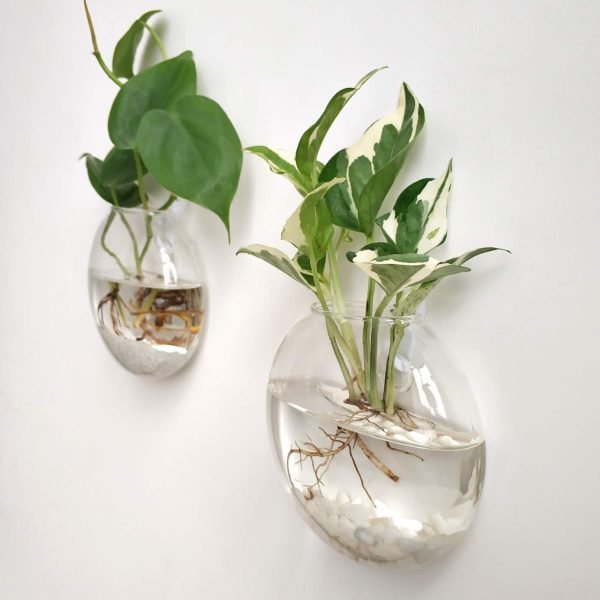
23. Disco Ball
We see the emergence of various accessories according to gardeners’ needs day by day. Indoor gardeners are truly adept at decorating their homes with plants. They know how to position a plant or gadget so that it adapts well to the house’s environment.
Humidifiers are used in the room to keep the plants moist. The Disco Ball Humidifier will bring a disco vibe to your home.
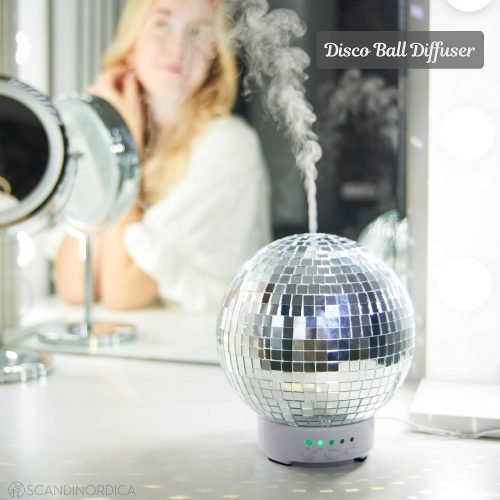
24. Handheld Digital Light Meter
Light meters are great for measuring your home, office, and outdoors. They can also measure solar heat and light in your plant room. This light meter covers a measurement range of up to 200,000 lux with highly accurate results. It has a high response rate of twice per second frequency, so you can get both fast and qualitative readings with confidence. It has a uniquely designed four digital color LCD screen so that you can easily check your readings at any time of the day.
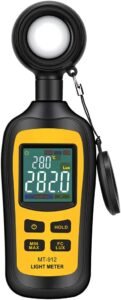
25. Hydroponics Growing System with Grow Light
You can give that great gadget to someone who likes cooking on Christmas or as a gift. This system looks fantastic. It is a beautiful gadget for those who can’t go outdoors or plant small vegetable plants outside because of the weather.
The Gazette contains:
Foam that acts as soil Sticks that help climb trees Labels for writing the name and date of seed sowing. Plastic holder where you can plant the foams. Meter tube for measuring water level. Cover for gaps where seeds or seedlings are not planted. Plant food
Finally, there is a tank, top back, pole, and adapter for electrical connection. You can easily use this hydroponic gadget to grow seedlings indoors in just a few steps.
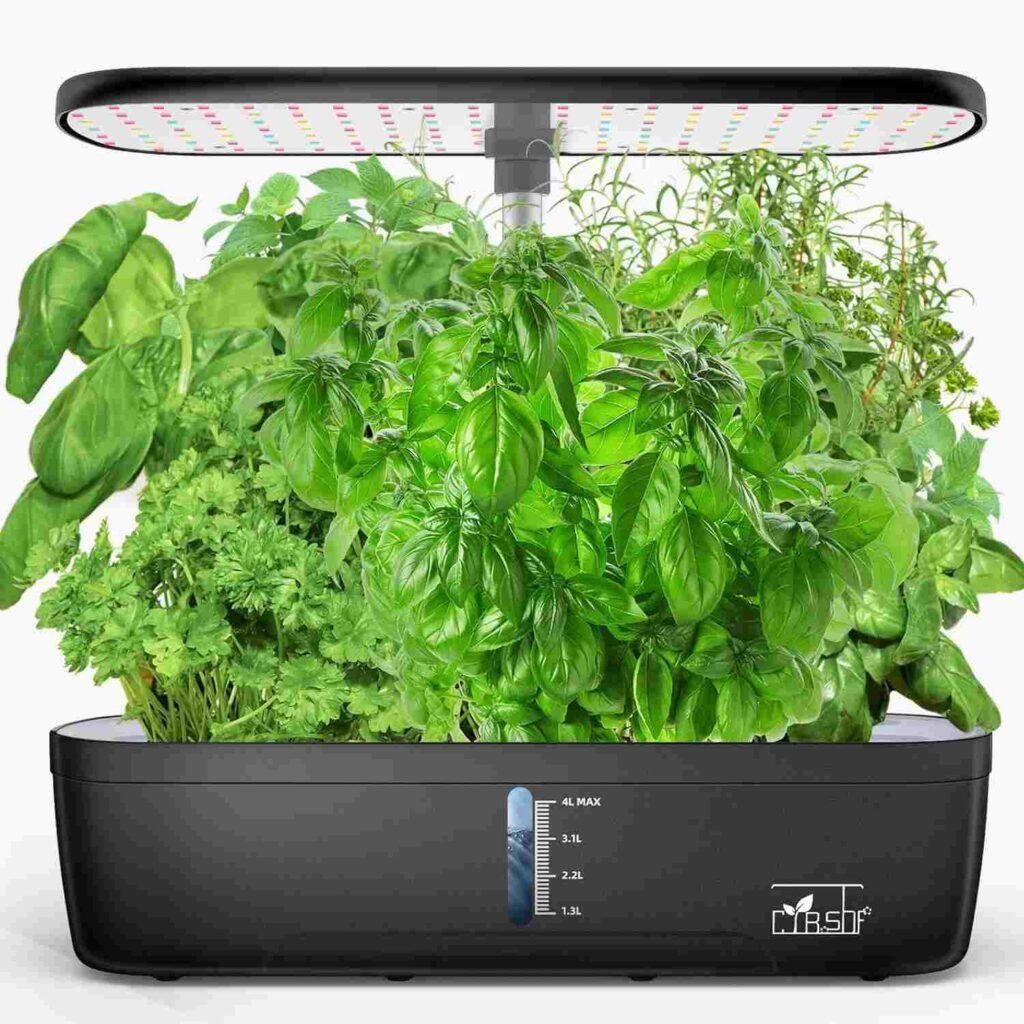
Using these 25 houseplants accessories will make indoor gardening easier and smoother. Let us know which ones you are using from this list.
